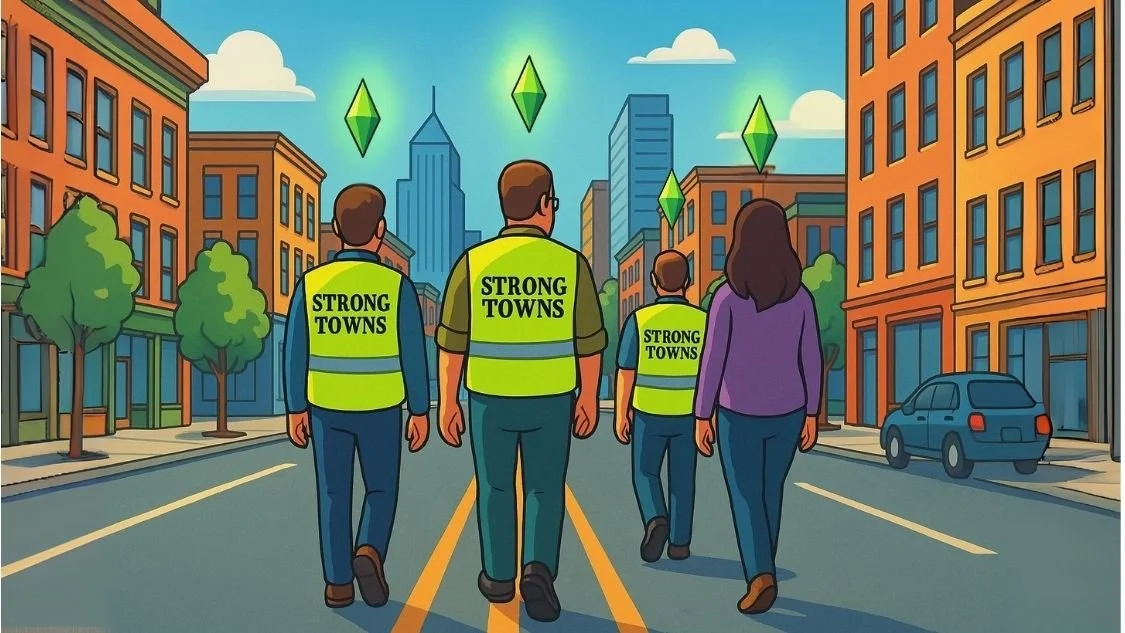How Planners Misuse Context
The idea of context comes up a lot in planning documents. It’s one of those slippery words, like “livability,” that planners tend to lean on just a little too much. But what exactly do we mean by context? And is preserving the existing context the silver bullet justification for a given set of design regulations it’s made out to be? Having written my fair share of planning documents that allude to “context,” I’ve come to feel that planners grossly misuse the concept.
Let’s start with the meaning of “context.” Merriam Webster defines it as “the interrelated conditions in which something exists or occurs.” It’s a definition vague enough to make a planner’s heart sing. But planners generally have something much more specific in mind. In planning documents, context is invariably deployed as a shorthand for the existing massing specifications—think heights, lot coverage, and setbacks—and land uses—think residential, commercial, and industrial—that historically prevailed in the neighborhood in question.
Take this highly typical report for a rezoning in Queens, which aimed to block new multifamily development and tighten floor area ratio rules in what had historically been a low-density, single-family neighborhood. The purpose of the rezoning, reiterated repeatedly in the report, “is to ensure that future residential development is consistent with its surrounding context.” Set aside for the moment whether maintaining a given context should inherently be a planning objective. What do they mean by context? On this matter, the report is clear: “the area’s predominately low-density character…”
Image source: Google Maps
For a profession that prides itself on being interdisciplinary, this is a profoundly impoverished characterization of the relevant context. Let me explain why with a visual example. Take the development above. Besides the fact that it’s a full two stories taller than its neighbors, it’s introducing a ground-floor community facility—a trade school for Chinese-Americans—on an otherwise residential street. In the superficial sense that planners misuse the word, it’s clearly “out of context.”
But in a more meaningful sense, it deeply respects the context. This particular development is located right on the bleeding edge of Sunset Park, Brooklyn’s rapidly growing Chinatown. Rents are rising, necessitating more housing than can be reasonably accommodated by two-story townhouses. With a subway station four blocks south, the need for housing in this particular area is especially high. The demand for small commercial and community space is likewise robust, as new Chinese-American small businesses sprout up and the community’s needs change.
To the extent that this project has a “context,” it’s one of a community that’s changing. On this block alone, at least two other similar buildings have gone up over the past decade. To merely gesture at one element of the context—say, the prevalence of two-story townhouses built nearly 100 years ago—and suggest that these new developments are out of context would not only be lazy; it would actively undermine the broader social and economic context shaping this neighborhood.
The irony of how planners deploy the term “context” is that, more often than not, it’s being used to privilege the massing of buildings over the deeper forces which define a neighborhood’s identity. Let’s return to that Queens rezoning: the superficial context the planners are bending over backward to enshrine is a neighborhood of two-story oneplexes (and the people rich enough to live in them). But the deeper context was that this was an affluent and largely underbuilt neighborhood, within comfortable walking distance of shops and transit, undergoing gradual densification in the face of growing demand for housing.
Forest Hills neighborhood, Queens. Image via Wikimedia Commons.
For all the fluff, the purpose of this rezoning, like so many downzonings like it, wasn’t to respect this neighborhood’s context in any meaningful sense: on the contrary, it was a reaction to a context of growth and change, a context which made a small band of homeowners uncomfortable. It’s indicative of a larger trend, in which the concept of context now serves as a stand-in for keeping the built environment as it exists today—cultural, social, and economic context be damned—providing a technical-sounding gloss for what is, at base, a reactionary impulse.
As long as NIMBYs control local land-use politics, many a planner may have to write reports on rezonings designed to block bigger buildings or keep out new residents. But why can’t we just be honest about it? Context is about more than building heights or front setbacks, and if being a “planner” means anything, we have some obligation to recognize this fact.
Cover image of rowhouses in Sunset Park, Brooklyn, via Wikimedia Commons.






When cities attempt to prescribe the exact way a building must be used, they risk regulating away the very life of a place.